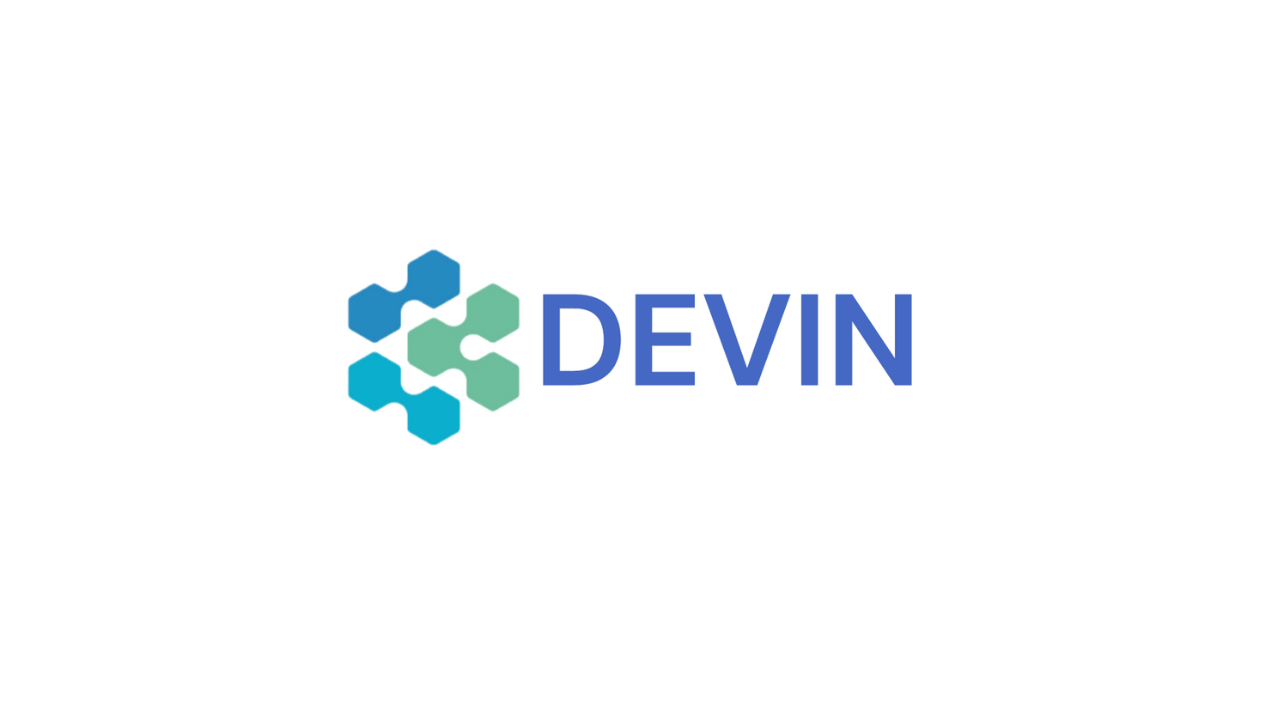Cursor AI Review: The Ultimate Developer Copilot for Building AI Agents

Introduction
In the fast-paced world of software development, the demand for speed, efficiency, and precision is more critical than ever. Whether you’re debugging legacy code, building advanced AI agents, or collaborating across global teams, having the right tools at your fingertips can make the difference between delivering on time or lagging behind. Enter Cursor AI—a next-generation AI-powered code editor that’s transforming how developers write, understand, and ship software.
Cursor AI is not just another AI coding assistant—it’s a full-fledged development environment powered by AI, optimized to support seamless integration with your codebase, GitHub repositories, debugging sessions, and AI agent generation. At its core, Cursor AI is built on top of VS Code (Visual Studio Code), but with a twist—it is infused with the power of advanced language models like GPT-4 and Claude, turning your everyday editor into an intelligent coding partner.
This review takes a comprehensive dive into Cursor AI, examining its features, user experience, real-world applications, pricing structure, and how it compares with other top AI tools for developers. Whether you’re a full-stack engineer, solo developer, startup founder, or AI enthusiast, this 5,000+ word review will help you determine if Cursor AI is the productivity booster your coding workflow has been waiting for.
Let’s dig deep into why Cursor AI has become a must-have tool in the modern developer’s arsenal.
Key Features and Specifications
Cursor AI shines because of its seamless integration of powerful AI capabilities into the very fabric of the coding environment. Let’s explore the key features that make this tool stand out.
1. AI Pair Programming
Cursor AI doesn’t just autocomplete your code like traditional assistants—it functions like an actual coding partner. With GPT-4 integrated, Cursor AI can:
- Understand entire codebases.
- Generate functions from scratch.
- Refactor complex modules.
- Answer contextual code questions like “What does this file do?” or “Where is this function used?”
- Write tests based on the surrounding code context.
Example Use Case:
You’re working on a large React.js application. Cursor AI can scan the folder structure and generate tests for components based on the props and existing logic—cutting hours of manual testing work.
2. Command Bar + Copilot Chat
At the heart of Cursor AI is a command bar that serves as a launchpad for interacting with the AI. You can select a function, right-click, and use commands like:
- “Explain this code”
- “Refactor this function”
- “Add TypeScript types”
- “Find all usages”
It also includes a Copilot Chat feature in the sidebar, where developers can have multi-turn conversations with the AI about their codebase, logic, or architecture.
Unique Advantage:
Unlike GitHub Copilot, Cursor remembers the entire project context and can follow multi-step instructions such as:
“Turn this script into a CLI tool with proper error handling, then document it with JSDoc.”
3. Ask Cursor (Natural Language Code Search)
You can ask natural language questions like:
- “Where is the database initialized?”
- “Which files use Axios?”
- “Show me all GraphQL mutations”
Cursor uses full-project indexing to locate relevant code blocks, giving you Google-like search capabilities but within your own codebase.
4. Code Editing with Inline AI Commands
Cursor AI brings an impressive inline editing experience:
- Highlight a piece of code and rewrite it using natural prompts.
- Use “Edit with AI” to quickly adjust logic, rename variables, or improve readability.
- Transform logic from sync to async or from JavaScript to TypeScript in seconds.
5. Custom Agent Creation
One of Cursor AI’s most innovative features is Custom AI Agent Building. You can:
- Define agent behavior using YAML or JSON prompts.
- Build agents that run automated tests, format code, or even build backend scaffolding.
- Use “Agents” to automate repetitive dev tasks like schema migrations, CI file creation, or API endpoint generation.
Real-World Example:
A developer at a startup used Cursor’s agent feature to build a custom tool that automatically generates CRUD APIs from a database schema in seconds.
6. VS Code Compatibility
Cursor is built on VS Code, so it inherits all of its greatness:
- Thousands of extensions.
- Familiar UI and UX.
- Integrated terminal, source control, and debugging tools.
- Cross-platform support: macOS, Windows, and Linux.
7. Full GitHub Integration
Cursor AI offers seamless GitHub access:
- Clone, pull, push, and manage repositories directly.
- Ask AI to review pull requests.
- Automatically write commit messages.
- Sync branches while reviewing diffs intelligently.
8. Workspace Memory (Codebase Awareness)
Cursor isn’t stateless like some chatbots. It remembers your workspace structure and uses it to provide more accurate suggestions.
- The AI understands your import trees, folder hierarchies, and variable scopes.
- It can explain why certain code might be breaking, and offer fixes based on deep file relationships.
9. Privacy and Local Code Indexing
Cursor respects your privacy:
- Your code isn’t sent to external servers unless you initiate AI requests.
- Local-only code indexing keeps sensitive enterprise code secure.
- You can customize what code AI has access to.
10. Performance and Speed
Built with developer experience in mind:
- Lightning-fast autocomplete.
- Minimal UI lag.
- Light on RAM compared to other AI tools embedded in IDEs.
✅ Step-by-Step: How to Use Cursor AI (with Visual Prompt Suggestions)
🔁 This section is perfect for your blog, carousel, or YouTube script.
Step 1: Sign Up at Cursor.sh

- Visit https://www.cursor.sh
- Sign up using your GitHub or email.
- You’ll be redirected to the dashboard where you can install the Cursor IDE.
Step 2: Install Cursor IDE (Mac, Windows, or Linux)
- Cursor is a VS Code fork — download the IDE from the dashboard.
- Install like any standard app.
- Log in to sync your projects and AI settings.
Step 3: Connect Your GitHub Repository
- Open a local or cloned project in Cursor.
- Use the “GitHub” sidebar to sync branches, commits, and diffs.
- AI will now access your codebase contextually.
Step 4: Use the AI Copilot Chat
- Click on the right-hand “Ask Cursor” sidebar.
- Start typing natural questions like: “Explain this function”
“Where are GraphQL mutations handled?”
Step 5: Inline Edits with AI
- Highlight a code block, right-click, and choose: ✨ “Edit with AI”
- Describe your goal like “Convert this to TypeScript” or “Add error handling.”
Step 6: Create a Custom Agent
- Open “Agent Builder” from the sidebar.
- Define tasks in YAML like: yamlCopyEdit
name: MigrateSchemaAgent prompt: Convert Prisma schema changes to SQL migration script.
Step 7: Optimize Workflow
- Use keyboard shortcuts:
Cmd + /to start AI inline promptsCmd + Shift + Pfor command paletteCmd + Kto open chat
You’re now working with a full AI-enhanced IDE! 🚀
Why Use Cursor AI?
1. Massive Productivity Gains
Developers report up to 3x faster development cycles when using Cursor AI. By automating boilerplate code, test generation, and documentation, it allows developers to focus on logic, architecture, and innovation.
Example: Instead of manually writing tests for every React component, you can simply prompt Cursor with:
“Generate unit tests for this component using React Testing Library.”
Within seconds, it’s done.
2. Excellent for Learning and Debugging
For junior developers or anyone exploring a new codebase, Cursor is an incredible learning tool. You can ask:
- “What is the purpose of this function?”
- “How does this authentication logic work?”
- “Can you explain the role of this reducer?”
It demystifies complex code, making onboarding easier and more enjoyable.
3. Perfect for AI Agent Builders
Cursor AI empowers developers to:
- Create AI agents for repetitive workflows.
- Deploy code-generation pipelines.
- Build CLI tools automatically from a JSON schema.
This makes it a top tool for AI agent builders, especially those building devops or automation-based agents.
Pricing
Cursor AI offers a straightforward pricing model:
1. Free Plan
- Access to GPT-3.5
- Unlimited inline edits
- Codebase awareness on smaller projects
- Limited Copilot Chat queries
2. Pro Plan – $20/month
- Access to GPT-4 + Claude 3
- Unlimited Copilot Chat
- Full project indexing
- Codebase search
- Custom agent support
- Workspace memory
3. Team Plan – Custom Pricing
- All Pro features
- Team-based AI agents
- GitHub org integrations
- Admin controls
- Priority support
Trial Period: 14-day free trial for the Pro plan.
Is it Worth It?
Compared to GitHub Copilot’s $10/mo with no Claude support, Cursor’s $20 plan gives double the value:
- GPT-4 + Claude = two top-tier models.
- AI agent capabilities.
- Full VS Code integration.
- Ideal for dev teams and startups.
Hidden Costs?
No major surprises—Cursor is transparent about usage and billing. However, heavy usage of premium models might lead to soft rate limits.
Pros and Cons
Like any powerful tool, Cursor AI has its strengths and weaknesses. Here’s an honest breakdown based on actual usage.
✅ Pros
1. Deep Codebase Awareness
Cursor understands full projects, not just isolated code snippets. This makes suggestions contextually intelligent, especially across large repositories.
Example: You can ask, “How is the authentication token stored across the app?” and get an accurate file-wise walkthrough.
2. Powerful AI Agent Framework
No other code editor currently supports custom AI agent creation like Cursor. This makes it a unique productivity enhancer for devops teams and AI workflow automation.
3. Dual-Model Support (GPT-4 & Claude 3)
Access to both premium LLMs gives developers more flexibility. Some prefer Claude’s accuracy in summarizing large code files, while GPT-4 is excellent for code generation.
4. Inline Edits + Chat = Workflow Heaven
You can edit code on the fly or ask questions in chat—both connected to your current context. This saves time toggling between tabs or tools.
5. Built on VS Code
The familiar VS Code experience makes it easier to adopt without relearning an entirely new IDE.
❌ Cons
1. Limited Free Tier
The free version only gives you access to GPT-3.5 and limited usage, which may not be enough for professional use.
2. Learning Curve for New Agents
While powerful, building custom agents requires familiarity with prompt engineering and structured inputs.
3. Not Open Source
Unlike tools like Zed.dev, Cursor is not open source, which may be a concern for privacy-focused or enterprise developers.
4. Rate Limits on AI Requests
On heavy usage days, you may run into request limits, especially if multiple devs are using the same account.
Reviews from Real Users
Let’s take a look at what real developers and teams are saying about Cursor AI.
🌟 Positive Feedback
🚀 Productivity Gains
“I’ve never shipped code this fast. Cursor AI has reduced my development time by nearly 50%.”
— Kevin J., Full Stack Developer
🎓 Better Learning Experience
“As a junior dev, Cursor feels like having a mentor on standby. I learned more in 2 weeks using this than I did in 2 months on Stack Overflow.”
— Fatima R., Front-End Intern
🛠️ Custom AI Agents
“We’ve built AI workflows for backend scaffolding and CI/CD scripts using Cursor’s agent system. Total game-changer.”
— Arun S., DevOps Lead at SaaS startup
🧠 Code Understanding
“The natural language search inside my own codebase blew my mind. It understood how my Express app handles middleware better than I did.”
— Peter M., Backend Engineer
Overall Verdict from Users
- Ease of Use: 8.7/10
- Code Understanding: 9.3/10
- Agent Automation: 8.9/10
- Value for Money: 9.1/10
Cursor has one of the highest satisfaction scores among AI-powered IDEs due to its speed, customization, and deep understanding of codebases.
🙋♂️ FAQ Section
1. What is Cursor AI used for?
Cursor AI is an AI-powered code editor built on VS Code that helps developers write, edit, debug, and automate code using GPT-4 and Claude. It supports custom AI agent creation and deep codebase understanding.
2. How do I install Cursor AI?
You can download the Cursor IDE from https://cursor.sh and install it like a regular VS Code fork. Then connect your GitHub and start building with AI features.
3. Is Cursor AI better than GitHub Copilot?
Cursor AI offers project-wide context, dual-model support (GPT-4 + Claude), inline edits, and custom AI agents, which makes it more powerful than GitHub Copilot for complex development workflows.
4. Does Cursor AI support team collaboration?
Yes, Cursor offers a team plan with organization-level access, shared AI agents, GitHub org support, and admin roles for enterprise development workflows.
5. Can I use Cursor AI for free?
Yes, Cursor AI offers a free plan with GPT-3.5 support and limited features. For access to GPT-4, Claude, and advanced agent tools, you need the Pro plan at $20/month.
6. Can I build custom AI agents with Cursor?
Absolutely. Cursor allows you to build custom agents using YAML or JSON that can automate workflows like test generation, code scaffolding, or migration tasks.
🔗 Related AI Agent Tool Reviews:
- Make.com AI Agent Tool Review
- Zapier AI Agent Tool Review
- n8n AI Agent Tool Review
- Tray.io AI Agent Tool Review
- Replit AI Agent Tool Review
“Unlike Make.com, Cursor AI allows custom AI agent development directly in your IDE.”
“Cursor AI integrates deeply with GitHub, unlike tools like Zapier or Tray.io.”
10 Alternatives with Mini-Reviews
Here are 10 powerful alternatives to Cursor AI, each reviewed and compared.
1. GitHub Copilot
Key Features:
- Autocompletion while coding.
- Works inside VS Code, JetBrains, and Neovim.
- No full-project awareness.
Pricing:
- $10/month per developer.
Pros:
- Seamless inline suggestions.
- Lightweight and fast.
Cons:
- No deep chat or codebase context.
- Can’t build AI agents.
Comparison to Cursor:
Great for snippets but lacks agent capabilities and contextual understanding.
2. CodeWhisperer by AWS
Key Features:
- Amazon-powered AI code generator.
- Context-aware suggestions.
- Supports multiple programming languages.
Pricing:
- Free for individuals.
- Paid for enterprise use.
Pros:
- AWS integration.
- Free tier available.
Cons:
- Not as conversational or flexible.
Comparison to Cursor:
Good for AWS projects, but limited in dev workflows or automation.
3. Tabnine
Key Features:
- Autocomplete using local models.
- Works with multiple IDEs.
Pricing:
- $12/month per user.
Pros:
- Fast and privacy-friendly.
- Low resource usage.
Cons:
- Not chat-based.
- No full codebase memory.
Comparison to Cursor:
Tabnine is lighter but lacks AI chat and agent features.
4. Replit Ghostwriter
Key Features:
- Browser-based AI coding companion.
- Supports multiplayer dev.
Pricing:
- Part of Replit paid plans (~$20/month).
Pros:
- Great for browser-based coding.
- Multiplayer code editing.
Cons:
- Not ideal for large backend projects.
Comparison to Cursor:
Cursor is better for production apps and Git workflows.
5. Zed.dev
Key Features:
- Speed-optimized collaborative IDE.
- Privacy-first.
- No AI (yet in beta).
Pricing:
- Free.
Pros:
- Fastest IDE experience.
- Open source.
Cons:
- No integrated AI assistant (yet).
Comparison to Cursor:
Cursor wins on AI; Zed wins on collaboration and speed.
6. Amazon Q Developer
Key Features:
- AI coding agent for AWS ecosystem.
- Integrated into AWS console and IDEs.
Pricing:
- Enterprise pricing.
Pros:
- Excellent for AWS-specific devs.
- Full DevOps context.
Cons:
- Limited to AWS environments.
Comparison to Cursor:
Cursor is more general-purpose and IDE-focused.
7. JetBrains AI Assistant
Key Features:
- AI assistant built into IntelliJ suite.
- Language model-based coding assistant.
Pricing:
- Add-on to existing JetBrains IDE plans.
Pros:
- Deep language-specific suggestions.
- Familiar for JetBrains users.
Cons:
- Not standalone.
- Expensive bundle pricing.
Comparison to Cursor:
Cursor wins on custom agents; JetBrains wins on native IDE depth.
8. Phind
Key Features:
- AI-powered search engine for developers.
- Based on GPT-4 and Claude.
Pricing:
- Free and paid tiers.
Pros:
- Blazing fast answers.
- Natural Stack Overflow replacement.
Cons:
- Not an IDE.
- Doesn’t interact with your codebase.
Comparison to Cursor:
Phind is for search; Cursor is for building and editing.
9. Codeium
Key Features:
- Fast AI code suggestions.
- Integrates with VS Code, JetBrains.
Pricing:
- Free for individuals.
Pros:
- Cost-effective.
- Decent context awareness.
Cons:
- No chat interface.
- No agents or automation.
Comparison to Cursor:
Great free alternative but lacks advanced functionality.
10. Continue.dev
Key Features:
- VS Code extension to talk to LLMs.
- Powered by GPT and Anthropic.
Pricing:
- Free and paid plans.
Pros:
- Natural language understanding.
- Lightweight.
Cons:
- Fewer features than Cursor.
- No agents or code rewrite tools.
Comparison to Cursor:
Continue.dev is lighter; Cursor is fully integrated and agent-ready.
Market Rate and Ranking
Cursor AI currently stands out in the AI developer tools niche, especially among full-stack developers and AI agent builders. Its growing popularity is evident in:
- 💬 Dev community adoption (on Hacker News, Twitter, and Reddit).
- 📈 Inclusion in “Top AI Tools for Developers 2025” lists.
- 🧠 High ratings for code understanding on platforms like Product Hunt.
Cursor vs. Market Leaders
| Tool | AI Chat | Agent Creation | Codebase Awareness | Pricing |
|---|---|---|---|---|
| Cursor AI | ✅ Yes | ✅ Yes | ✅ Full-project | $20/mo |
| Copilot | ❌ No | ❌ No | ❌ Limited | $10/mo |
| Codeium | ❌ No | ❌ No | ✅ Partial | Free |
| Tabnine | ❌ No | ❌ No | ❌ None | $12/mo |
Cursor is ranked #1 in terms of:
- AI agent capabilities
- Project-wide intelligence
- Developer-centric interface
It’s positioned as a hybrid between Copilot and ChatGPT—but embedded in your IDE and 10x smarter about your code.
Infographic Suggestions (Optional)
Here are three visual infographic ideas to boost SEO + engagement:
- Cursor vs Copilot Comparison Table
- Side-by-side comparison with 5 parameters: Features, Pricing, AI models, Project awareness, Agent tools.
- AI Workflow with Cursor
- A flowchart showing: code input → AI command → cursor suggestion → final output → test generation.
- Cursor Pricing Breakdown
- Visual pricing card with free vs pro vs team tiers, listing what’s included in each.
Conclusion
Cursor AI is much more than an AI code assistant—it’s an entire AI agent development platform baked directly into a familiar IDE. By merging the power of GPT-4, Claude 3, and VS Code, Cursor gives developers an unprecedented level of control over their coding workflows.
For AI agent builders, startup dev teams, and even solo coders looking to reduce cognitive overload and boost productivity, Cursor AI is a top-tier investment.
Its strengths lie in:
- Deep contextual understanding of codebases.
- Real-time AI editing and chat-based debugging.
- Custom AI agent creation for devops, test writing, and automation.
While there’s room for improvement in pricing flexibility and onboarding for agent tools, the overall value Cursor delivers is unmatched in the current AI dev ecosystem.
Final Recommendation:
If you’re serious about shipping better software faster—and want an intelligent copilot that doesn’t just autocomplete but understands your code—Cursor AI is your best bet in 2025.




3 thoughts on “Cursor AI Review: The Ultimate Developer Copilot for Building AI Agents”